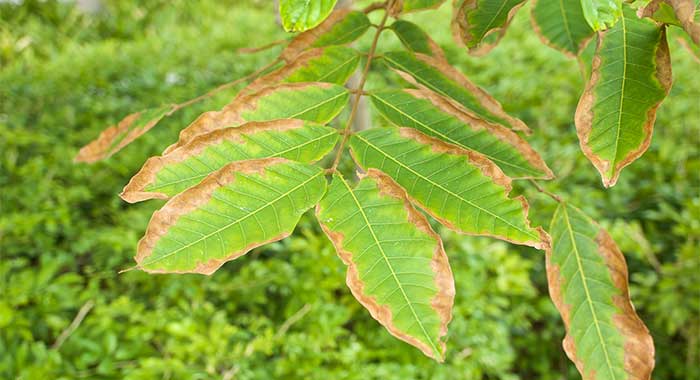Become a Control Freak with K and Reap the Rewards – Part 1

Innovative crop monitoring is an essential component of the Nutrition Farming® approach. This involves learning simple, inexpensive strategies that can help you to rapidly identify potential problems. The idea is to stay ahead of the game, so you are always in control. This improved management can often serve as the stress buster that turns fear into fun. There is no better example of the rewards from this due diligence, than the gains we can gather through improved potassium (K) management. In this two-part article, we will look more closely at potassium management. In this first segment, we will look at the chief roles of potassium and in the second installment, next week, I will explore innovative monitoring strategies and optimal solutions for correction of deficits.
Managing the "Money Mineral"
I have recently returned from a highly successful tour of the UK. Several times, during my farm visits, I encountered winter wheat and other crops that were struggling for potassium during the business end of the season. The growers were surprised that a previously healthy crop had suddenly developed deficiency symptoms from one day to the next. In most cases, the crops were suffering a dry finish and this is what had created the burnt leaf tips and other symptoms of a K shortage. It is important to understand that any shortage of potassium at this time will reduce yield and, if that shortage persists for more than a week, there is no way to play catch-up.

I often call potassium the "money mineral", because it can have more direct impact on yield than any other mineral. Potassium is involved in moving sugars into grains, fruits and pods. These sugars govern fruit size and sweetness and ensure plump, fine flavoured grains, beans and peas. More potassium is always required during fruiting and seed-fill, simply because so much more sugar is required at this time. This is when we can see K levels in the leaf plummet, if we are monitoring with leaf tests or a potassium meter. This will always prove costly if we do not respond quickly. Below, I have outlined three ways in which your crop might be impacted:
The Price of Potassium Neglect
1) If we do not respond to a K shortage there will always be less yield and reduced quality. Grains will not fill out to their full potential and legumes will not fill their pods. Citrus fruit will be sour and small in size and your small tomatoes will be similarly lacking in flavour.
2) The second price to pay can be an increase in disease pressure. Potassium is a very mobile mineral in the plant and, in the absence of sufficient K, it will abandon the lower leaves to satisfy fruiting requirements further up. This will lower the sap pH in the lower leaves, making them the first port of call for marauding microbes. Think of the brown spot that shortens the life of most tomato plants. It always begins in the lower leaves (as do many diseases) and this is directly related to the K shortage.

3) The third cost relates to reduced stem strength and the associated impact on photosynthesis. It is common to see the plant or tree droop in the dry, and we assume this is all about moisture. It is a serious issue because when the solar panel is not presented to the sun, the wheels begin to fall off quite quickly. Many times you will find that much of this damaging drought stress is due to reduced stem strength from potassium deficiency, rather than just moisture stress. A potassium foliar spray at this time can often result in an impressive and unexpected bounce back.
In next week’s installment I will describe five ways to identify a damaging K deficit. I suspect you will be pleasantly surprised to discover how simple it can be to master this mineral and maximise yield and quality.
To read Part 2 of this article, please click here.
Sign up to our e-newsletter to receive the latest articles, product updates and exclusive offers from NTS. Every new subscription receives a free digital copy of Graeme Sait's book, 'Nutrition Rules!'. CLICK HERE TO SUBSCRIBE

